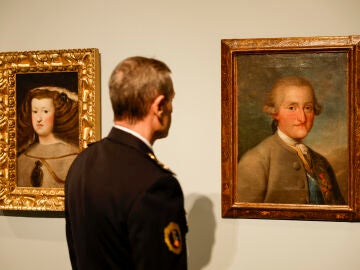
The Police of the Generalitat Valenciana has intervened five fake paintings by Goya and Velázquez that several dealers of Valencia and Castellón marketed for 76 million of euros and investigates four people for a crime of fraud. Among the forgeries were four attempts to goyas and and a Velázquez, accompanied by abundant documentation also falsified to deceive and gain the confidence of private buyers.
The investigation began at the beginning of the year, when it was found that those investigated were offering the works to different buyers through various art dealers in the provinces of Valencia and Castellonas explained by the Minister of Justice, Interior and Public Administration, Gabriela Bravo.
Given the suspicions, the agents consulted its originality to Manuela Menathe one considered as major specialist in Goya, who corroborated that they were forgeries, while the obligatory technical expert reports have been made by the technician David Gimilio, from the Museum of Fine Arts of Valencia. The police proceedings were transferred on March 14 to the Investigating Court of Valencia.
What have been the intervened works?
Among the works intervened are ‘Portrait of Charles IV’, attributed to Goya, which was sold for seven million euros, and ‘Portrait of María Luisa de Parma, Princess of Asturias’, another supposed Goya that also went on the market for a value of seven million. In these two cases, the investigation concludes that they are actually altered copies of the portraits of the neoclassical painter Antón Rafael Mengs, whose originals are in the Museo del Prado. ‘Allegory of the Pilar of Zaragoza’, another supposed painting by Francisco de Goya, was going to be sold for four million.
It is a work of a poor quality, which has not even been done by a professional painter. The fourth intervened work is ‘Portrait of Mariana of Austria’, a fake oil on canvas by Velázquez whose market value amounted to 50 million euros. The original is a full-length portrait currently on display at the Museo del Prado. They have also seized the painting ‘Blessing of Santa Rosa de Lima’, another supposed Goya that was going to sell for eight million. The sketch is not by Goya, neither for aesthetics nor for its pictorial quality, and it seems to be an Italian work from the 17th century, from the workshop of Carlo Maratta (1625-1713) or Pietro da Pietri (1663-1716).
The ‘councillor’ has warned that counterfeit art it’s a crime which barely generates social alarm in Spain and is one of the sectors that generates the most irregular capital, behind drugs, weapons and prostitution. Beyond the economic value, the most important thing is that this criminal practice favors a devaluation of Spanish creatorsin this case, “great plastic artists of our history”.
Source: Lasexta
Bruce is a talented author and journalist with a passion for entertainment . He currently works as a writer at the 247 News Agency, where he has established himself as a respected voice in the industry.












